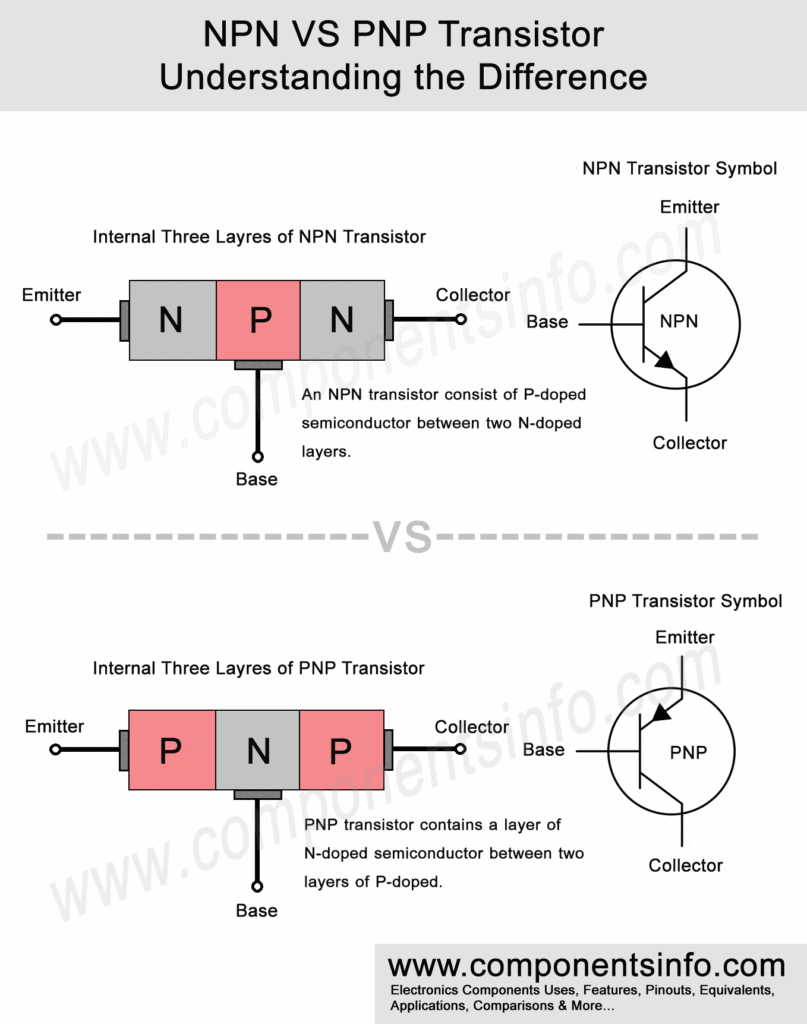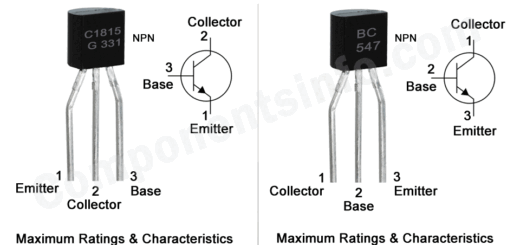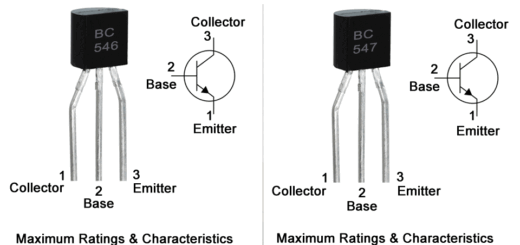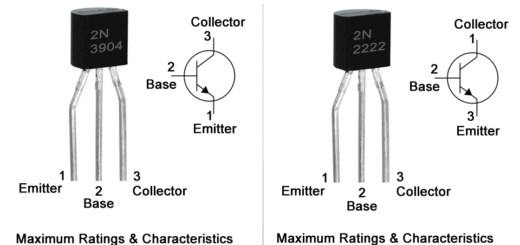NPN VS PNP Transistor Understanding the Difference
In this post we are going to discuss about NPN VS PNP transistor or what are the difference between these two types. A transistor is an electronic component whether it’s a NPN or PNP both are used for two jobs one is switching and the other is amplification. When a transistor is used in switching mode it drives load according to the input signal or current on its base. This input signal or current decides how much current should be allowed between the collector and emitter or in other words we can say how much current you want to provide to the load. The load can be an LED, a motor or any type of electronic device. Different transistors have different load driving and other capabilities which the user or circuit designer used according to the load requirements and it is also one of the reason there are different part numbers and types of transistors are there. The transistors as switches are also the base of logic gates which are used to build internal circuitry of computers, cell phones, smart phones etc.
On the other hand when a transistor is used in amplification mode it amplifies any type of signal in electronics but the signal amplification is also depends upon how much signal you are providing at its base, what type of transistor it is means how much gain it can handle and what is its max amplification and other capabilities. As mentioned above these are the reasons there are many types of transistor are there because the manufacturers made them according to each application requirements.
Types of Transistors & BJT VS FET / MOSFET
There are two main types of transistors which are BJT which stands for “Bipolar Junction Transistor” and other is FET stands for “Field Effect Transistor”. Both the types such as BJT and FET are further divided in to two types. The two types of BJT transistors are called NPN and PNP. Before discussing the two types of FET transistors like BJT have we should know that FET transistor also has other type which is called MOSFET. Like BJT both FET and MOSFET has two types which is called N-Channel and P-Channel. To make it more clear or easy to understand we can say that like the BJT have “NPN and PNP” same as the FET and MOSFET has “P-Channel and N-Channel”. But the BJT is completely different from FET and MOSFET because the BJT transistor is a current operated device and the FET and MOSFET are voltage operated devices.
NPN VS PNP Transistor
As mentioned above BJT transistors are manufactured in two types which are NPN and PNP. The physical appearance of both the transistors are identical due to which one cannot detects which is NPN and which is PNP. It can only be detected by checking the part number written on the transistor and checking the datasheet or searching on the internet. Another way to check whether a transistor is NPN or PNP is to use a multimeter.
The NPN transistor consists of three leads which are connected with the internal layers. By looking at the image below you will understand the internal structure of the NPN transistor. As you can see the P-type semiconductor has been made between to N-type semiconductors thus making the P-type semiconductor the base of the transistor and other two N-type are the emitter and collector.
The NPN type is the most commonly used in electronics applications and in most of the electronic appliances and devices you will see NPN types the most. The reason is in NPN transistor the most of the carriers are electrons but in PNP transistor type most of the carriers are holes, so the electrons have greater ability to move due to which an NPN transistor is preferred over PNP. Another major reason is the switching speed of the NPN transistor is always better than the PNP transistor because the availability of free electrons. One of the other main reason for using NPN transistor in electronic designs is by using an NPN transistor the –ve connection of the power supply to the circuit becomes common which is ideal to design a circuit as compare to using the PNP in which the +ve connection of the supply becomes common.
Now that you have understood about the NPN transistor we will discuss about the PNP transistor. The PNP transistor is used less as compare to the NPN transistor.
Also see the image the PNP transistor also has three layers in which the N-type semiconductor has been made between the two P-type semiconductors thus making is PNP transistor. Although the PNP transistor is not used as much as the NPN but the PNP transistor has its own characteristics and where it is required the NPN transistor cannot replace it.



